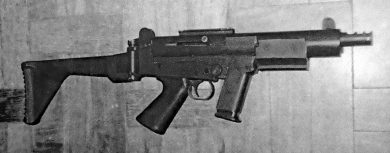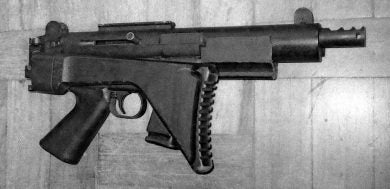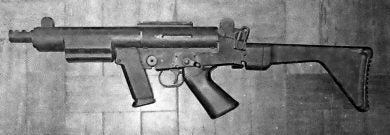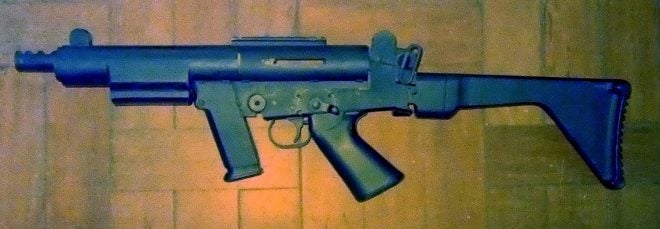For five whole decades or so after World War II, the .45 ACP and 9x19mm calibers were, as known, the most widely employed in pistols and submachine guns worldwide, this including Brazil. Types in wide use by the country’s armed and police forces included the locally-made INA M.B.50 and M953, both in .45 ACP, and the Taurus MT-12, in 9x19mm, whose original projects came, respectively, from Denmark (Madsen M1950) and Italy (Beretta M12). Some indigenous designs, all chambered to the 9x19mm round, were, in fact, often tried by different individuals and manufacturers in Brazil, quite a few of them having already been shown to history-inclined TFB readers. Other than that, some foreign-made types were also adopted, such as the German-made Walther MPK and the Heckler & Koch MP5 in various sub-types. All in 9x19mm, of course.
However, when the .40 S&W round appeared in the early 1990s as a magical solution for all LE ammo needs, manufacturers everywhere were quick to flood the market with pistols and, to a lesser extent, submachine guns so chambered. In fact, it seemed that the “point forty” would reign supreme for a long, long time. Brazil’s IMBEL – Indústria de Material Bélico do Brasil also followed this trend with its M1911A1-type pistols, which found acceptance both in the local market and for export (Springfield Armory). Looking ahead, the company also started considering extending the .40 S&W options to the subgun niche.
This took place in the second half of 1999 at the company’s Fábrica de Itajubá (Itajubá Factory) facilities, in Minas Gerais State, when one of its designers, Jair Lins da Silva (“Jairzão”, for closer friends), was allowed to put some of his ideas into practice. This resulted in a single prototype, which was already being test-fired early in 2000. The project was not intended to actually progress into a full-production status, being merely a study of concepts and of the general behavior of the .40 S&W round when used in a selective-fire gun.

Right side view of the sole prototype built. Note short accessory rail on top of the receiver and the FAL pistol grip and firing mechanism housing.
The “Prototype 000” (author’s designation) operated with a typical closed-bolt, short-recoil M1911 pistol (hammer/striker) action using a 16-round .40 S&W magazine from an IMBEL-made pistol. The barrel was 130mm long and featured a prominent three-slot compensator at the muzzle, overall gun length being 660mm. By folding its polymer stock to the right side, length came down to 425mm. Just to save design time and costs, a FAL pistol grip and firing mechanism were used, the gun’s empty weight being 3.2kg.

Gun with the polymer stock folded to the right side. Note wide, decrescent slots on compensator with two additional side ports. The ambidextrous charging handle is set for right-side use.
The prototype was given a number of ambidextrous features, such as the positions of the fire selector (Safe, Semi-auto, Auto, 3-rd bursts), charging handle, and ejection window. Although I never had a chance to fire that single prototype, I was told by “Jairzão” that it performed pretty well, indeed, its cyclic rate of fire being in the 750-800 rounds-per-minute range. It served its original exploratory purpose well, many of the lessons learned being used in a subsequent experimental .40 S&W SMG of the same period, which will soon be brought to TFB readers’ attention.

The wide circle for the fire selector settings comes from the four adjustments available. Radius of the iron sights (rear flip type 50-100m apertures) was 320mm, FAL protection ears being used.

The prototype was just a test bed for general concepts related to the use of .40 S&W ammo in a selective-fire gun.
BTW, the low quality of photos used here results from the miserable state of the negatives recovered from author’s files.
 Your Privacy Choices
Your Privacy Choices
